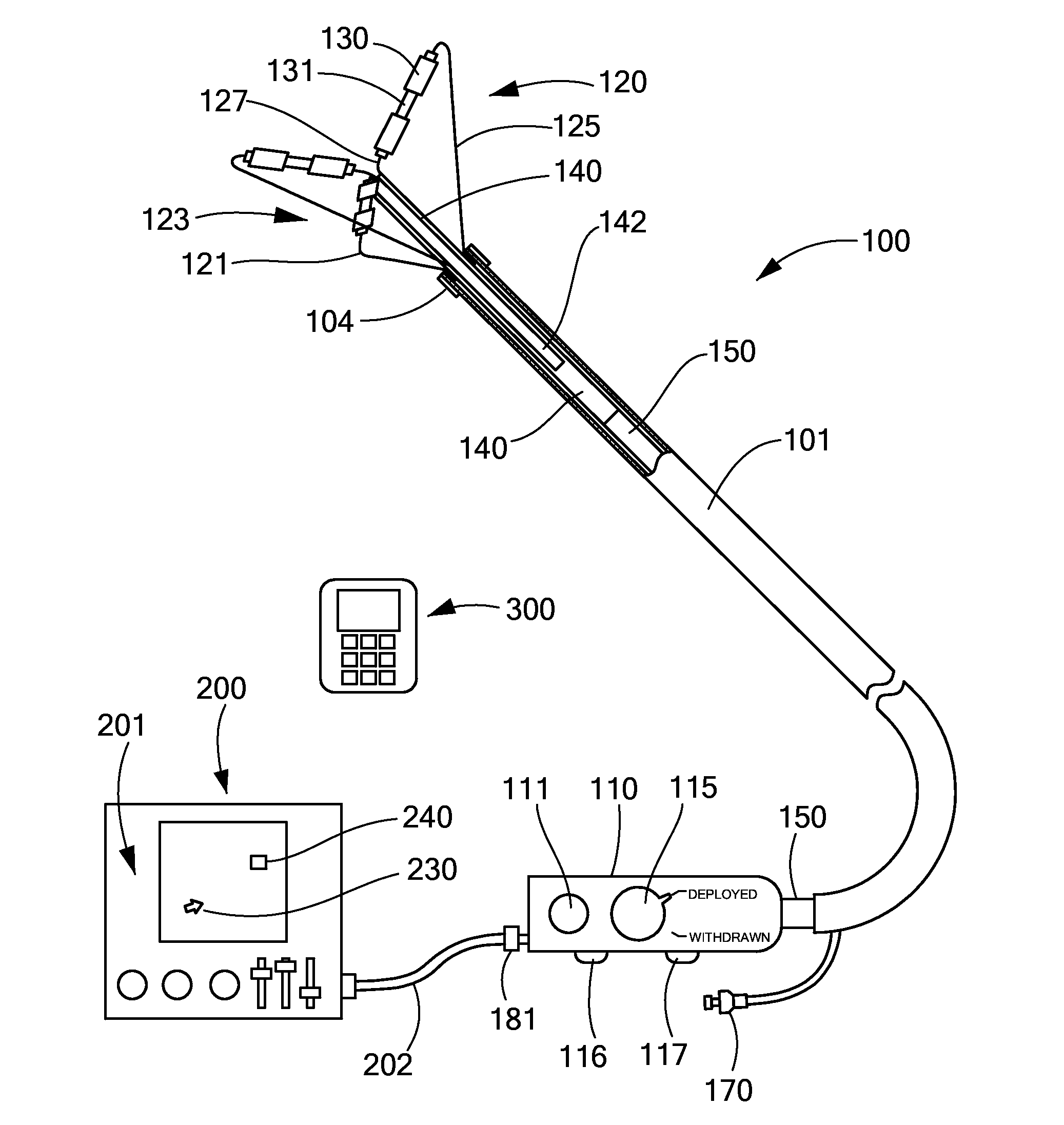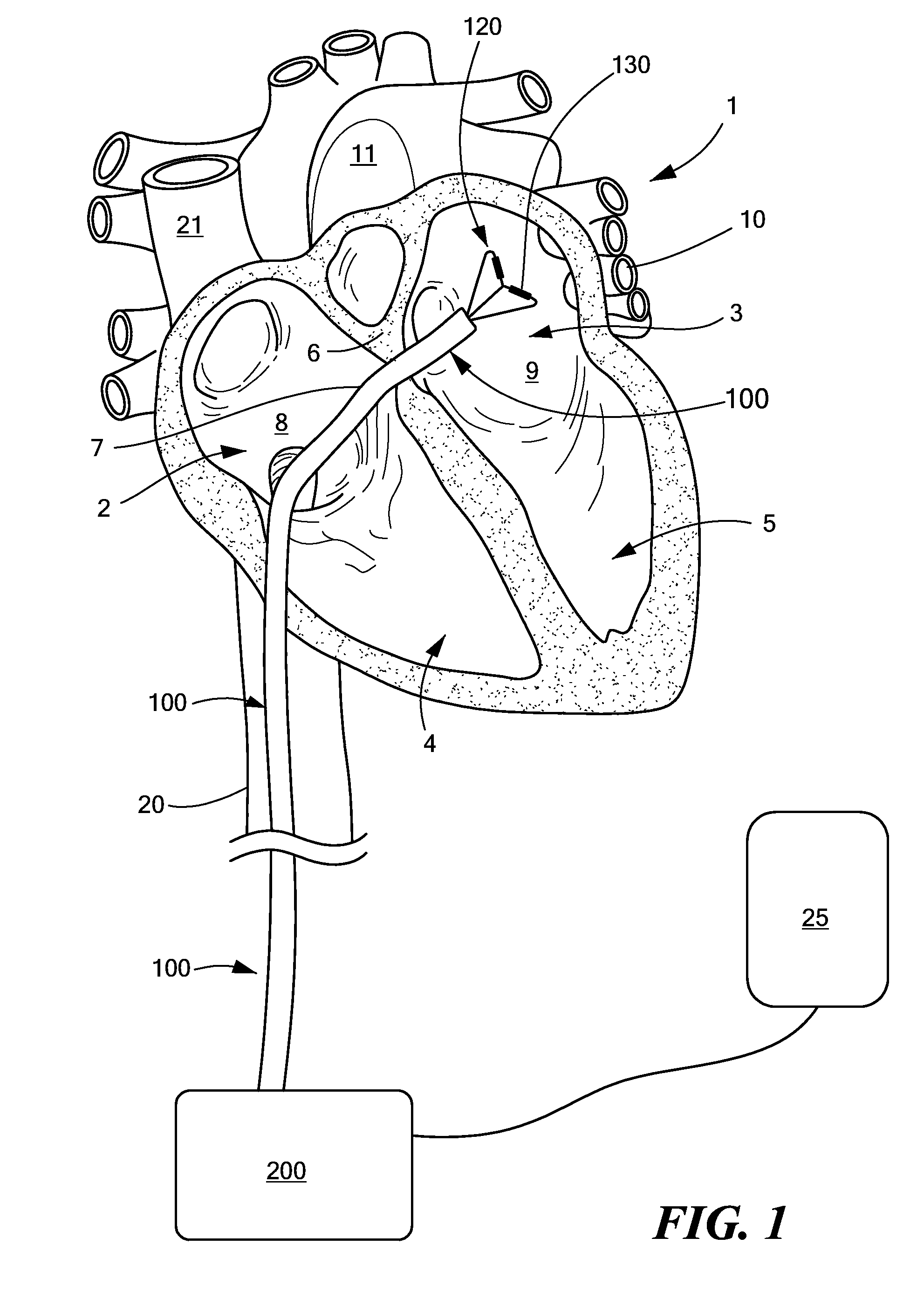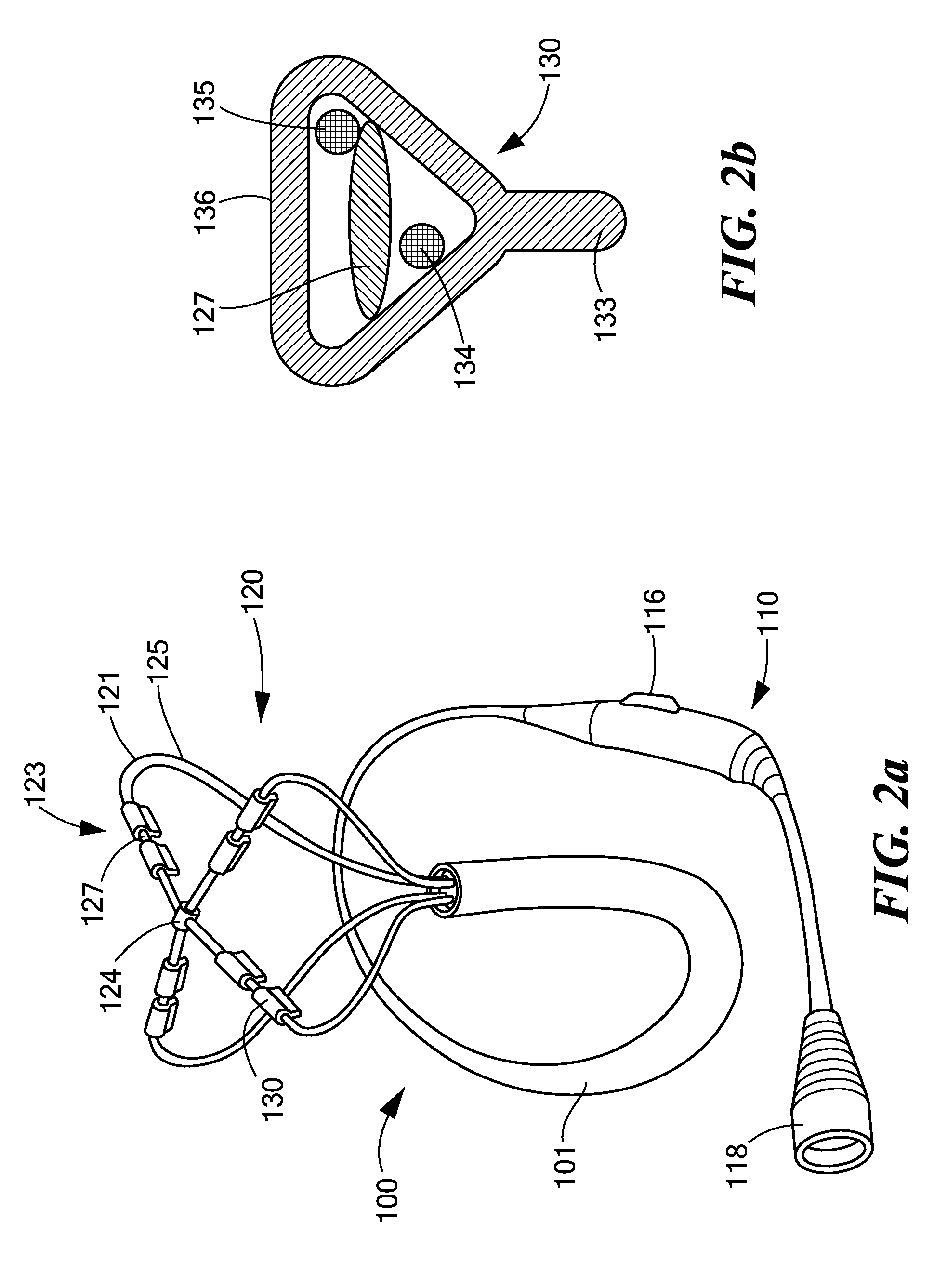User interface for tissue ablation system
a tissue ablation and user interface technology, applied in the field of systems and catheters, can solve the problems of ineffective blood pumping into the ventricle, lack of synchrony, organ malfunction, etc., and achieve the effect of simplifying the viewing and modification of system parameters
- Summary
- Abstract
- Description
- Claims
- Application Information
AI Technical Summary
Benefits of technology
Problems solved by technology
Method used
Image
Examples
Embodiment Construction
[0022]Reference will now be made in detail to the present embodiments of the invention, examples of which are illustrated in the accompanying drawings. Wherever possible, the same reference numbers will be used throughout the drawings to refer to the same or like parts.
[0023]The present invention utilizes ablation therapy. Tissue ablation is often used in treating several medical conditions, including abnormal heart rhythms. Ablation can be performed both surgically and non-surgically. Non-surgical ablation is typically performed in a special lab called the electrophysiology (EP) laboratory. During this non-surgical procedure a catheter is inserted into a vessel such as a vein, and guided into the heart using fluoroscopy for visualization. Subsequently, an energy delivery apparatus is used to supply energy to the heart muscle. This energy either “disconnects” or “isolates” the pathway of the abnormal rhythm. It can also be used to disconnect the conductive pathway between the upper ...
PUM
 Login to View More
Login to View More Abstract
Description
Claims
Application Information
 Login to View More
Login to View More - R&D
- Intellectual Property
- Life Sciences
- Materials
- Tech Scout
- Unparalleled Data Quality
- Higher Quality Content
- 60% Fewer Hallucinations
Browse by: Latest US Patents, China's latest patents, Technical Efficacy Thesaurus, Application Domain, Technology Topic, Popular Technical Reports.
© 2025 PatSnap. All rights reserved.Legal|Privacy policy|Modern Slavery Act Transparency Statement|Sitemap|About US| Contact US: help@patsnap.com



